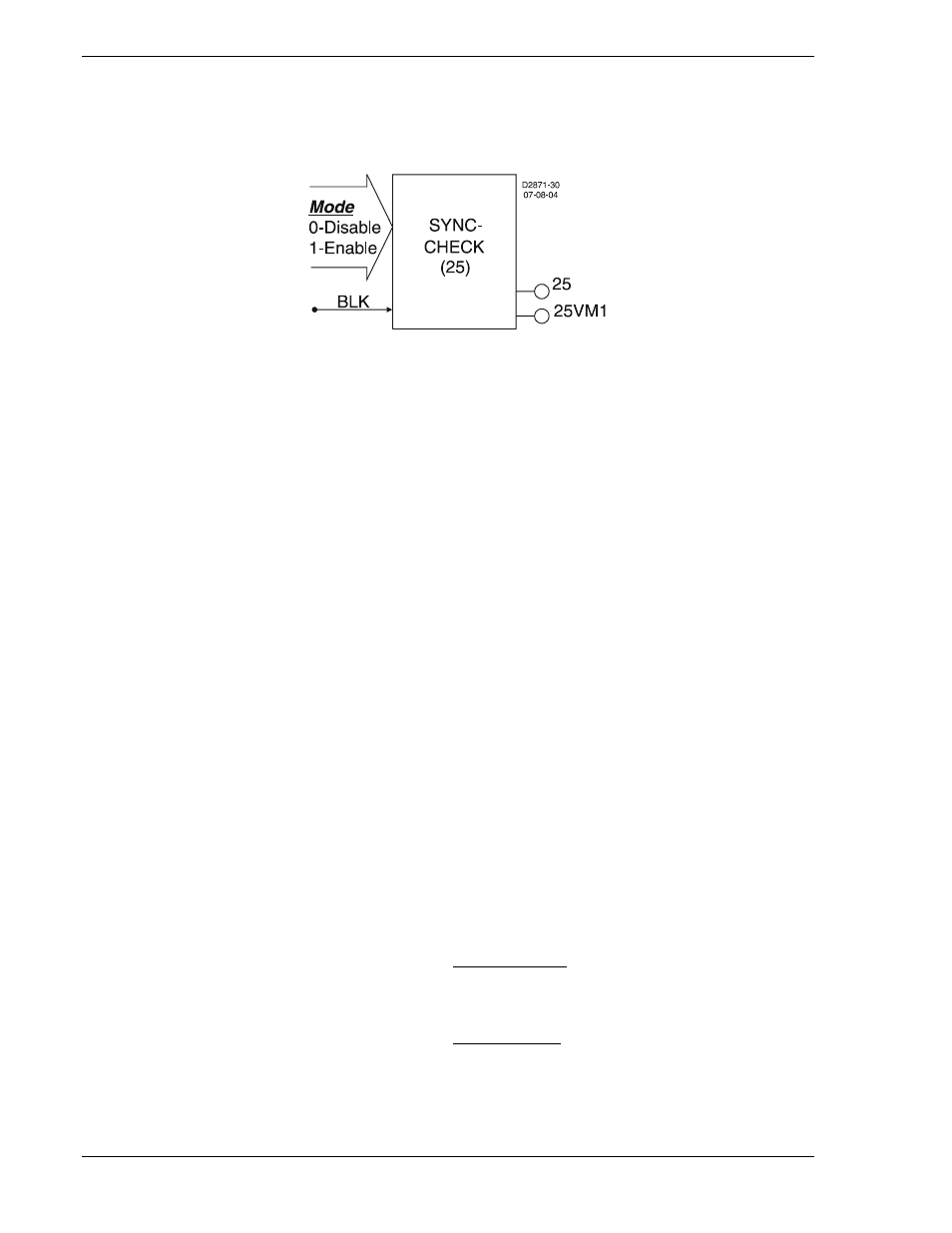Sync-check protection, 25 - sync-check protection, Sync-check protection -56 – Basler Electric BE1-700 User Manual
Page 112: 25 - sync-check protection -56, Figure 4-55. synchronism-check logic block -56

SYNC-CHECK PROTECTION
25 - Sync-Check Protection
Figure 4-55 illustrates the inputs and outputs of the Sync-Check element. Element operation is described
in the following paragraphs.
Figure 4-55. Synchronism-Check Logic Block
The Sync-Check element has two outputs: 25 and 25VM1. When monitored voltage between the systems
as measured by the phase VTs and the auxiliary Vx input circuits meets angle, voltage, and slip criteria,
the 25 output becomes TRUE. 25VM1 is the voltage monitor output.
The BLK (Block) input is used to disable synchronism checking. A BESTlogic expression defines how the
BLK input functions. When this expression is TRUE, the element is disabled by forcing the outputs to logic
0. This feature functions in a similar way to the torque control contact of an electromechanical relay.
The 25 element is enabled or disabled by the mode input. Two modes are available. Selecting Mode 0
disables the 25 element and selecting Mode 1 enables the 25 element.
The 25 function module will change the 25 output to TRUE if the following conditions are met:
a) Phase angle between systems is less than setting.
b) Frequency error between systems is less than setting. As an additional parameter, the relay can
be set to only allow generator frequency greater than bus frequency.
c) Voltage magnitude between systems is less than setting (the voltage used by the relay for this
feature is a voltage magnitude measurement, not a voltage phasor measurement).
The BE1-700 compares the VTP voltage magnitude and angle to the VTX voltage magnitude and angle
to determine synchronism. Therefore, proper connection of the VT inputs is vital to the correct operation
of the 25 function.
The relay automatically compensates for phase angle differences associated with the phase and auxiliary
VT connections, including single-phase VTP connections. That is, for a VTP selection of phase to phase
and a VTX selection of phase to neutral, the relay will automatically compensate for the 30-degree angle
between the two voltage sources. However, the relay does not scale for differences in magnitude
between the applied voltages. For example, if VTP = 4W (L-N) and VTX=AB (L-L), the angle is
automatically compensated for. However, one of the input magnitudes needs to be scaled by SQRT (3)
so that the magnitude of the compared voltages is equivalent under sync conditions. Note: The sync-
check will not work if VTX connections are set for residual voltage input VTX=RG.
For clarification on single-phase VTP connections, refer to the interconnection diagrams shown in Section
12, Installation, of this manual. The single-phase parallel connections ensure that the zero-crossing circuit
is always connected to the sensed circuit.
For single-phase sensing connections derived from a phase-to-neutral source:
H1 Case:
Terminals C13, C14, C15 (A, B, C) are connected in parallel. The single-phase
signal is connected between the parallel group and C16 (N).
For single-phase sensing connections derived from a phase-to-phase source:
H1 Case:
Terminals C14, C15, C16 (B, C, N) are connected in parallel. The single-phase
signal is connected between C13 (A) and the parallel group (AB, BC, CA).
4-56
BE1-700 Protection and Control
9376700990 Rev M